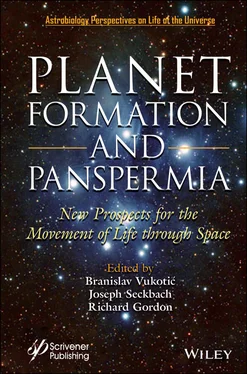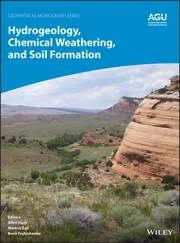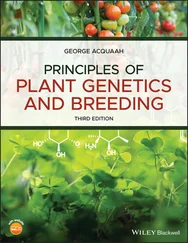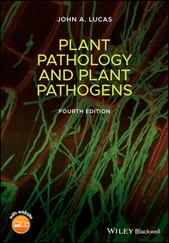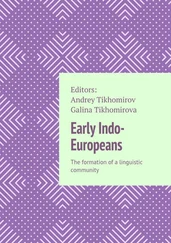Planet Formation and Panspermia
Здесь есть возможность читать онлайн «Planet Formation and Panspermia» — ознакомительный отрывок электронной книги совершенно бесплатно, а после прочтения отрывка купить полную версию. В некоторых случаях можно слушать аудио, скачать через торрент в формате fb2 и присутствует краткое содержание. Жанр: unrecognised, на английском языке. Описание произведения, (предисловие) а так же отзывы посетителей доступны на портале библиотеки ЛибКат.
- Название:Planet Formation and Panspermia
- Автор:
- Жанр:
- Год:неизвестен
- ISBN:нет данных
- Рейтинг книги:3 / 5. Голосов: 1
-
Избранное:Добавить в избранное
- Отзывы:
-
Ваша оценка:
- 60
- 1
- 2
- 3
- 4
- 5
Planet Formation and Panspermia: краткое содержание, описание и аннотация
Предлагаем к чтению аннотацию, описание, краткое содержание или предисловие (зависит от того, что написал сам автор книги «Planet Formation and Panspermia»). Если вы не нашли необходимую информацию о книге — напишите в комментариях, мы постараемся отыскать её.
Audience
Planet Formation and Panspermia — читать онлайн ознакомительный отрывок
Ниже представлен текст книги, разбитый по страницам. Система сохранения места последней прочитанной страницы, позволяет с удобством читать онлайн бесплатно книгу «Planet Formation and Panspermia», без необходимости каждый раз заново искать на чём Вы остановились. Поставьте закладку, и сможете в любой момент перейти на страницу, на которой закончили чтение.
Интервал:
Закладка:
2
Why We Should Take Interstellar Panspermia Seriously
Amedeo Balbi
Dipartimento di Fisica, Università degli Studi di Roma “Tor Vergata” Via della Ricerca Scientifica, Roma, Italy
Abstract
After a long period of neglect, the hypothesis of interstellar panspermia has gained new consideration in recent years, due to a series of theoretical and observational developments. In this chapter, I briefly outline why this possibility should not be dismissed, especially in regions of the Galaxy with higher stellar density than average. Furthermore, I give some motivations for taking the mechanism into account when developing theoretical models of the distribution of life in the Galaxy (such as in studies of the galactic habitable zone) and in drawing implications from the results of future searches for biosignatures in exoplanets. This theoretical work should be complemented by experimental studies, in order to assess the concrete feasibility of panspermia with higher confidence.
Keywords:Astrobiology, extraterrestrial life, galactic habitabile zone, biosignatures, interstellar panspermia
2.1 Introduction
The idea that biological material—and even living organisms—can be exchanged between planetary systems is more than one century old, but it has not been part of the mainstream discussion in astrobiology for long [2.28, 2.43]. Historically, skepticism on the early proposals of panspermia, put forward at the beginning of the 20th century [2.3], was at least in part motivated by an incorrect understanding of planetary formation mechanisms, which was dominated by the “catastrophic” theories of Buffon, Chamberlin, Moulton, and Jeans [2.9]. However, even many decades after such theories were abandoned, panspermia failed to regain a place in the scientific discourse.
This has changed recently, at least in the version of panspermia—more appropriately called “lithopanspermia”—which posits that life can travel across space carried by meteoroids and other minor bodies. There is now well-established evidence that rock fragments have indeed been exchanged between nearby planets in the Solar System, such as Mars and the Earth [2.32]. Available data on the survivability of radio-tolerant organisms in deep space, as well as experimental tests on hypervelocity impacts, make it conceivable that extremophiles trapped in rocks can be expelled by an inhabited planet and reach other locations unharmed [2.18, 2.19, 2.33]. This has led to speculation that nearby planets in the Solar System could have cross-contaminated in the past [2.30] and that other, more densely packed planetary systems, such as the one around TRAPPIST-1, might be even more conducive to the accidental spreading of life from one habitable location to another [2.20, 2.23]. The possible occurrence of panspermia within the Solar System would have obvious direct consequences for the problem of the origin of life on Earth.
Enlarging the scope to galactic scale, the observation of the first interstellar asteroid visiting the Solar System [2.27] has confirmed that the exchange of material between stellar systems is feasible. In light of this, the idea that life can be disseminated by natural processes over interstellar distances cannot be dismissed. In this short chapter, I will argue that the mere possibility of interstellar panspermia should be given careful consideration, as it would have relevant consequences on the assessment of galactic habitability and on the interpretation of future exoplanet observations.
2.2 The Case for Interstellar Panspermia
The possibility that panspermia could act over interstellar distances has been debated for at least two decades. Initial estimates of the probability that a rock ejected from Earth could be captured by another terrestrial planet in a different stellar system in the solar neighborhood were deemed too small to be relevant as a life-spreading mechanism [2.29]. Thus, interstellar panspermia was also dismissed as implausible. However, subsequent studies argued that such a conclusion was probably too pessimistic [2.45, 2.13, 2.46]. In fact, it was shown that the capture probability could increase in crowded environments, such as in star-forming clusters [2.2, 2.7], and can be significantly enhanced by interactions with binary systems [2.24].
Because the survivability of microorganisms in deep space depends on the shielding mechanism provided by the rocks, there is probably a minimal mass to life-carrying fragments for panspermia to work at interstellar distances, of order ~1–10 kg. If the typical survival time of microorganisms trapped in the rocks is τ s, the fraction of surviving microorganisms after a travel time t can be modeled as P ∝ e -t/τs[2.13]. No exact estimate for τ sexists, although values of order ~10 5years or higher seem possible given favourable conditions. In this regard, we note that the assumption that microorganisms can only survive when shielded within rocks is rather conservative: more speculative scenarios can be envisioned, where microorganisms endure the vacuum of space without insolation and atmosphere (powered, for example, by slow chemical reactions or even long-lived radionuclides), leading to much larger values of τ s. Whichever the case, by adopting this simple survival model and assuming a dynamical mechanism for the transfer of material, one can estimate the rate of life-bearing rocks impacting a terrestrial planet at any location in the Galaxy.
The possibility that interstellar panspermia played a role over the entire disk of the Milky Way is certainly not established conclusively, but it cannot be entirely dismissed either. Because of the different stellar densities at various locations, the effectiveness of the mechanism is not homogeneous over the whole Galaxy, and it might have been more important within specific subvolumes. In [2.5], we argued that the eventuality of lithopanspermia should be given special consideration for planets residing in the galactic bulge, where the high density of stellar systems might make the transfer more likely than in the disk (see also [2.8]). We made an initial estimate of the efficiency of panspermia in the bulge by adopting the model outlined in [2.29, 2.2] for the rate of life-bearing rocks impacting a terrestrial planet in another stellar system
[2.1] 
where v is the relative velocity of rocks with respect to the stars, nL is the number density of life-bearing rocks, and σ is the impact cross-section. The latter can be computed as the product of the capture cross-section from a stellar system, σ c, and the probability that a rock impacts a terrestrial planet in the system once is captured, P impact. Plausible values for σ care in the range 0.01–0.05 AU2 [2.29] and are expected to vary based on the average stellar velocity dispersion, orbital configurations and multiplicity of the stellar and planetary systems, ejection velocity, rock size distribution, and so on. In our analysis, we adopted the values σ c= 0.025 AU 2and P impact= 10– 4from [2.29]: these are probably conservative in general, and in particular with respect to the conditions in the bulge. In fact, the value adopted for σ capplies to planetary systems with a Jupiter-type planet in a Jupiter-like orbit. However, only ~10% of all systems meet this criterion. As already mentioned, binary star systems (that make up roughly 40% of all stars) have a much higher cross-section [2.24, 2.13]. Similarly, the capture rate can be enhanced in systems that contain massive hot Jupiters or brown dwarfs, both of which could have habitable exomoons. As an illustration, using the fit for σ cfrom [2.2] and assuming a velocity dispersion ~120 km/s for stars in the bulge [2.44] would result in a value σ c= 0.045 AU 2.
Читать дальшеИнтервал:
Закладка:
Похожие книги на «Planet Formation and Panspermia»
Представляем Вашему вниманию похожие книги на «Planet Formation and Panspermia» списком для выбора. Мы отобрали схожую по названию и смыслу литературу в надежде предоставить читателям больше вариантов отыскать новые, интересные, ещё непрочитанные произведения.
Обсуждение, отзывы о книге «Planet Formation and Panspermia» и просто собственные мнения читателей. Оставьте ваши комментарии, напишите, что Вы думаете о произведении, его смысле или главных героях. Укажите что конкретно понравилось, а что нет, и почему Вы так считаете.
